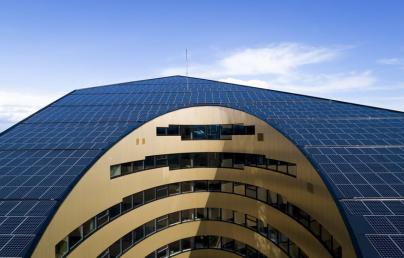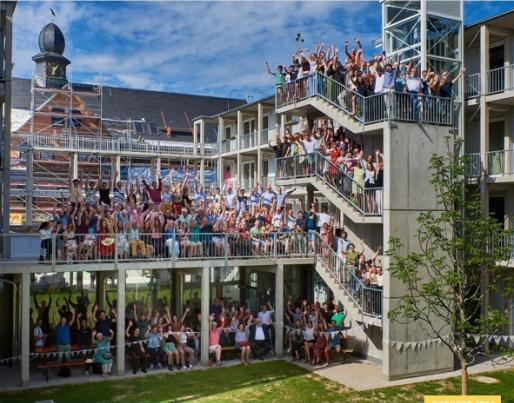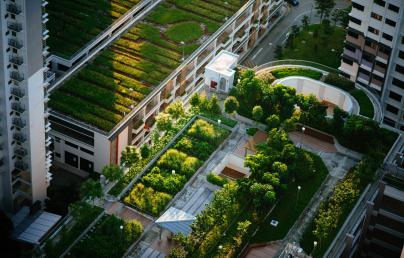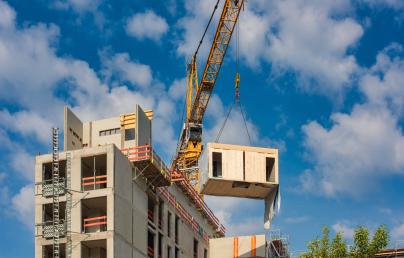
Prioritising existing buildings for people and climate

Prioritising existing buildings for people and climate
This paper identifies sufficiency measures that reduce the need for unnecessary new construction by maximising the use of existing buildings.
This paper recommends that by prioritising a more efficient use of the existing building stock, we can ensure that EU citizens have access to affordable, high-quality housing in a cost and time-effective manner, while significantly reducing carbon emissions and curbing resource overconsumption. As we are expecting the Commission to publish their first-ever Affordable Housing Plan in their first 100 days, now is the best opportunity to align the issue of affordable housing with existing energy performance improvements for buildings and endorse sufficiency principles that can simultaneously advance multiple policy objectives.
Don’t just renovate – repurpose!
34% of EU homes are under-occupied and office spaces only 57% are being used. Shifting the focus to creating housing units through the repurposing and reuse of existing space offers the opportunity to redefine housing beyond energy poverty and new construction, expanding the focus to include availability, accessibility, inclusivity, and overall housing quality.
Ultimately, sufficiency is about exercising common sense, and doing what we can with what we already have. The paper highlights numerous current examples of sufficiency in action, it is providing shelter and revitalising communities in various contexts, so we know it can be done. And it should absolutely be included in the COM’s Affordable Housing Plan.
Sufficiency is a key lever for decarbonisation, as it reduces emissions throughout the entire lifecycle of buildings. With embodied emissions playing an increasingly critical role over the next 30 years, this paper focuses on sufficiency measures that reduce the need for unnecessary new construction by maximising the use of existing buildings (defined as 'building sufficiency').
As a policy strategy, sufficiency focuses on optimising the use of existing buildings to create a built environment that is attractive, affordable, and aligned with the actual space and accessibility needs of occupants, all while respecting planetary boundaries. And there is huge untapped potential: 34% of the EU population lives in under-occupied homes, while the average office occupancy rate is around 57%.
Context
Buildings are by far the largest contributors to greenhouse gas (GHG) emissions in the EU due to their extensive energy and material use. Apart from the vast input of energy and raw materials required for construction, operation and maintenance, buildings also exert substantial land use impacts. Growing awareness and evidence of the Whole Life Carbon (WLC) footprint of buildings has broadened the narrative on building decarbonisation to include the full range of emissions related to materials, energy and built space in each step of the life cycle. A more comprehensive understanding of the climate impacts of the building stock enables a more effective assessment and comparison of mitigation measures, thus facilitating more informed and effective policymaking.
The WLC perspective has also unveiled the critical and underestimated relevance of embodied emissions, which are on par with advocating for energy efficiency and renewable solutions. Technical solutions aimed at energy performance alone may not be enough to achieve rapid and meaningful building stock decarbonisation, even with immediate and widespread implementation of low-carbon technologies. Moreover, this approach risks perpetuating the extraction of scarce raw materials and dependence on their imports as new buildings are rapidly built in response to an urgent need for new housing. Leveraging supply-side and demand-reduction measures simultaneously is needed to maintain a trajectory aligned with climate neutrality targets.
At the same time, affordable housing has been established as a key priority by the recently reappointed Commission President, Ursula von der Leyen. By prioritising a more efficient use of the existing building stock, we can significantly reduce carbon emissions, curb resource overconsumption, and ensure that EU citizens have access to affordable, high-quality housing in a cost and time-effective manner.
Prioritising-existing-buildings-for-people-and-climate_final.pdf
English (538.4 KB - PDF)
